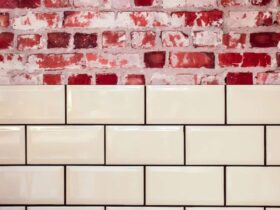To cut a slate slab, use a circular saw with a diamond-tipped or carbide blade. Make sure the blade is thin for better precision.
Understanding The Tools And Techniques
Before tackling the process of cutting slate slabs, it’s crucial to be well-versed in the appropriate tools and techniques. Each method offers distinct advantages and challenges. Understanding the tools and techniques involved in cutting slate is essential to achieve accurate and precise results.
Handheld Slate Cutters
Handheld slate cutters are an excellent tool for achieving straight and precise cuts on slate slabs. These handheld devices are specifically designed to provide control and accuracy when cutting through slate. The process involves scoring the slate along the desired cutting line and then breaking it along the score using the cutter.
Using A Circular Saw
When it comes to cutting a larger quantity of slate slabs, a circular saw becomes a valuable tool. Pairing the saw with a diamond-tipped blade designed for cutting stone ensures clean and precise cuts. The circular saw method offers efficiency and speed while maintaining accuracy, making it an ideal choice for larger scale slate cutting projects.
Wet Saw Techniques
Wet saws, including masonry and tile saws, are invaluable for cutting slate slabs with ease, speed, and safety. These saws utilize a diamond-tipped blade and a water cooling system to reduce dust and keep the blade and slate cool during cutting. This method is particularly advantageous for larger and more complex cutting jobs, delivering smooth and precise results.
Best Practices For Cutting Slate Slabs
When it comes to cutting slate slabs, following the best practices is crucial to achieve accurate and clean cuts. In this section, we will discuss the important aspects of cutting slate slabs, including marking the slate, choosing the right blade, and using power tools or hand tools.
Marking The Slate
Before cutting the slate slab, it is essential to mark the area where the cut needs to be made. This helps to ensure a precise and straight cut. Here’s how you can mark the slate:
- Measure and make the necessary markings using a ruler or a straightedge.
- Use a pencil or a marker to mark the cutting line on the surface of the slate slab.
- Make sure to mark both sides of the slate slab to accurately align the cut.
Choosing The Right Blade
The choice of the blade is crucial when it comes to cutting slate slabs. The right blade ensures clean cuts and prevents the slate from chipping or breaking. Consider the following factors when choosing the right blade:
- Opt for a diamond blade with a continuous rim for cutting slate slabs.
- Ensure that the blade size matches the size of the slate slab.
- Check for the blade’s compatibility with the power tool or hand tool you plan to use.
Using Power Tools Or Hand Tools
There are various options available for cutting slate slabs, including power tools and hand tools. Consider the following factors when deciding which method to use:
- Power Tools: Power tools such as a circular saw or a wet saw offer precision and efficiency when cutting slate slabs. Make sure to follow the instructions provided by the manufacturer for safe and accurate cutting.
- Hand Tools: Hand tools like chisels and hammers or handheld slate cutters provide more control over the cutting process. This method is suitable for smaller projects or when precision is of utmost importance.
Remember, whether you choose power tools or hand tools, always prioritize safety by wearing appropriate protective gear, such as gloves and safety goggles.
By following these best practices, you can confidently cut slate slabs with precision and achieve the desired results. Take your time, practice, and ensure that you have the right tools and equipment for the job.
Tips For Cutting Different Slate Thickness
Cutting thick slate slabs requires:
- Using a circular saw with the appropriate blade and technique
- Ensuring a steady hand for precise cuts
- Securing the slab properly to prevent movement
For thin slate slabs:
- Consider using a wet saw for smoother cuts
- Applying light pressure to prevent breakage
- Wearing safety goggles to protect your eyes
When cutting slate tiles:
- Mark the slate for accurate cutting
- Utilize a chisel and hammer for manual cuts
- Consider using handheld slate cutters for precision
Safety Measures And Precautions
When cutting slate slabs, prioritizing safety is crucial to prevent accidents and injuries. Adhering to protective gear, maintaining work area safety, and handling power tools safely are essential aspects to consider.
Protective Gear
- Wear safety goggles to protect your eyes from flying debris.
- Use ear protection to safeguard against loud noise from power tools.
- Don‘t forget to wear protective gloves to shield your hands.
Work Area Safety
- Clear the work area of clutter and ensure good lighting for visibility.
- Avoid distractions and maintain a focused approach while cutting slate slabs.
- Secure the slate slab properly to prevent any movement during cutting.
Handling Power Tools Safely
- Familiarize yourself with the specific power tool’s manual before operation.
- Always unplug the power tool when not in use or changing settings.
- Work in a well-ventilated area when using power tools to prevent inhaling dust.
Finishing And Smoothing Techniques
When cutting slate slabs, use a circular saw with the right blade for precision. Finish by smoothing with a handheld slate cutter or power saw for straight, accurate lines. Experiment with different techniques to find what works best for you.
Once you have successfully cut your slate slab, it’s time to focus on the finishing and smoothing techniques to ensure a polished and professional-looking result. In this section, we will explore the different techniques and tools you can use to achieve the desired finish.
Natural Ribbon Edge
One of the most popular choices for finishing the edges of slate slabs is the natural ribbon edge. This technique preserves the organic shape of the slate, giving it a rustic and unique appearance. To achieve this look, carefully chip off any rough or jagged edges using a chisel and hammer. Take your time and work slowly to maintain control and prevent any accidental damage to the slab. Once you have smoothed the edges, you can use sandpaper to further refine the surface and create a seamless transition from the cut edge to the natural ribbon edge.
Cleaning Up The Cut
After cutting the slate slab, it is essential to clean up the cut to ensure a smooth and professional finish. Begin by removing any dust or debris from the surface using a brush or compressed air. This will give you a clear view of the cut and help you identify any imperfections that need to be addressed. Next, use a wet sponge or cloth to wipe down the cut edge and remove any residual dirt or marks. Once the slate is clean and dry, carefully inspect the cut to ensure it is free from any chips or rough spots. If needed, use sandpaper or a rubbing stone to smooth out any imperfections and create a clean and polished finish.
Finishing Touches
To complete the slate slab cutting process, it’s time to add the finishing touches. One option is to apply a stone sealer to protect the surface of the slate and enhance its natural beauty. This will help prevent staining and make the slab easier to clean and maintain. Another option is to use a stone enhancer or wax to bring out the vibrant colors and veining of the slate, giving it a glossy and luxurious appearance. Finally, consider adding a bullnose edge to the cut side of the slab for a smooth and rounded finish. This will not only enhance the visual appeal of the slab but also make it safer to handle. Remember to follow the instructions provided by the manufacturer when applying any sealers, enhancers, or waxes to ensure optimal results.
By following these finishing and smoothing techniques, you can transform a rough-cut slate slab into a stunning piece that adds beauty and elegance to any space. Whether you choose the natural ribbon edge or opt for a more polished look, the key is to take your time and pay attention to the details. With the right tools and techniques, you can achieve a professional finish that showcases the timeless beauty of slate.
Specialized Methods For Craftsmanship
Cutting slate requires precision and specialized methods to achieve the desired results for various projects. Whether it’s for crafting intricate designs or installing slate for flooring, using the right techniques is essential for a professional finish. Below, we’ll explore specific methods tailored for different crafting needs.
Cutting Slate For Crafts
When it comes to crafting with slate, precision is key. Whether you’re creating coasters, artwork, or other decorative items, accuracy is essential in achieving the desired shapes and sizes. Handheld slate cutters or power tools such as angle grinders are commonly used for this purpose. Hand tools are suitable for beginners, while power tools offer more efficiency and precision, making them ideal for experienced crafters.
Using An Angle Grinder
For crafting intricate designs or cutting slate into specific shapes, utilizing an angle grinder is a popular choice. Its versatility and ability to make precise cuts make it a preferred tool for craftsmen. When using an angle grinder, it’s crucial to employ safety measures such as wearing protective gear and ensuring a stable cutting surface. This method allows crafters to achieve intricate cuts and intricate designs with ease.
Slate Cutting For Flooring
Installing slate for flooring requires accurate sizing and precise cutting to ensure a seamless fit. While handheld tools may suffice for smaller scale projects, for larger flooring installations, a wet saw or masonry saws are often employed. These tools offer speed, efficiency, and safety, making them ideal for cutting slate tiles for flooring applications. They allow for precise cuts, reducing the likelihood of errors during installation.
Common Challenges And Solutions
Learn how to cut slate slabs with ease using the right tools and techniques. A circular saw with a specific blade is effective for cutting slate tiles, especially if you don’t have access to a wet saw. Take your time, use proper markings, and practice for precise and straight lines.
Difficulty Level Of Cutting Slate
When it comes to cutting slate slabs, one of the common challenges is the difficulty level involved. Slate is a dense and durable material, making it relatively tough to cut, especially for beginners or those without the appropriate tools. However, with the right techniques and tools, you can overcome this challenge.
Dealing With Natural Variations
Dealing with natural variations in slate slabs can pose a challenge during the cutting process. The inherent variations in thickness, texture, and grain patterns of slate can make it challenging to achieve uniform cuts. It’s important to address these variations effectively to ensure precision and consistency in the cut pieces.
Troubleshooting Common Issues
When cutting slate slabs, several common issues may arise, such as chipping, uneven edges, or difficulty in achieving precise cuts. Troubleshooting these issues requires a combination of proper tool selection, technique refinement, and careful handling of the slate material. Addressing these issues effectively is essential for achieving high-quality results.

Credit: www.msisurfaces.com
Frequently Asked Questions Of How To Cut Slate Slab
What Is The Best Tool To Cut Slate Slabs?
The best tool to cut slate slabs is a circular saw with the right blade and technique for precise cutting. It’s a common and efficient option, particularly if access to a wet saw is unavailable. Using a masonry or diamond blade with a circular saw ensures smooth and accurate slate cutting.
What Is The Best Thing To Cut Slate With?
The best tool to cut slate is a circular saw with the right blade and technique. It’s suitable for cutting a few slate tiles or when a wet saw isn’t available.
What Blade Is Best For Cutting Slate?
The best blade for cutting slate is a diamond-tipped or carbide blade, preferably thin for accuracy and to prevent chipping. A circular saw is a popular tool for cutting slate tiles, especially if you only have a few to cut or don’t have access to a wet saw.
Is Slate Difficult To Cut?
Cutting slate can be challenging, but it’s possible with power tools or a slate cutter. Hand tools are easier for beginners, but power tools offer more precision.
What Are The Best Tools For Cutting Slate Slabs?
Circular saws equipped with the right blade are common tools for cutting slate tiles efficiently.
How Do You Cut Slate With Precision?
Mark the slate for cutting and use a chisel, handheld slate cutters, or a power saw for precise cuts.
Conclusion
To cut slate slabs, there are several tools and techniques you can use. One common tool is the circular saw, as long as you have the right blade and technique. Another option is using a chisel and hammer or handheld slate cutters.
If you have access to a wet saw, it can make the work easier and safer. Overall, cutting slate requires careful marking and the right tools, but with practice, you can achieve straight and precise cuts.








Leave a Reply